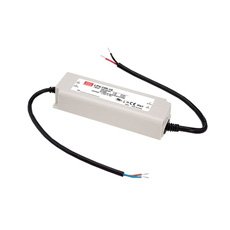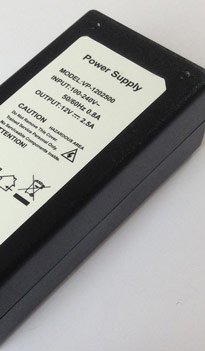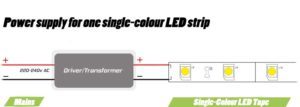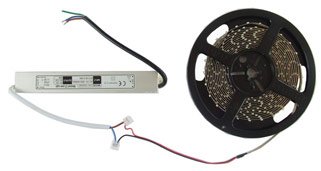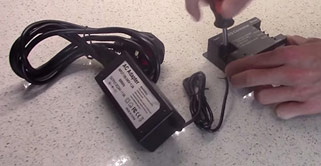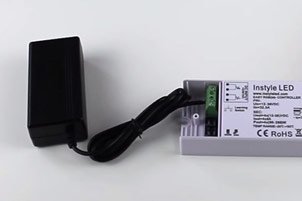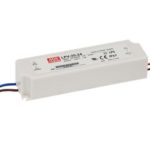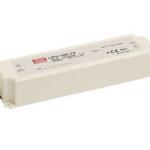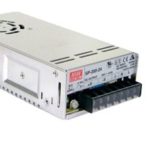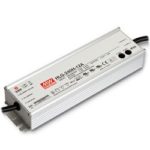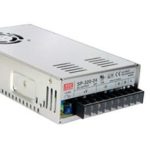What is an LED power supply? How does it work?
Our LED drivers/transformers come in many shapes and sizes, all available in a choice of 12V or 24V models. Each can be used to power different lengths of LED strip, depending on its specification (output wattage).
Every LED transformer from InStyle is built to work seamlessly with our range of LED strip lights, and with other LED products as well – remember to make sure you choose the model that matches your LED tape’s voltage and power.
Your transformer(s) should be connected between the mains supply and the LED strip lights to be powered, as shown in this wiring diagram.
Learn more about connecting transformers, as well as LED receivers, dimmers and controllers, on our ‘how to connect LED strip lights’ support page and our notes on wiring (below).
How much LED tape can my LED power supply manage?
InStyle LED stocks a wide range of LED power supplies, from 30 watts up to 320 watts.
The stated wattage is the maximum value that the LED driver can supply. You will find that every type of LED tape in our product range also has a wattage rating (for example, 4.8w per metre).

To decide how much power your LED strip driver needs, multiply the length of LED tape you have (in metres) by the wattage per metre. For example…
7m of LED tape x 4.8w p/m = 33.6 watts
This means you will need an LED transformer that can supply 35 watts (at least).
To work out how much LED tape you can run off an LED power supply, simply divide the wattage of your LED strip driver (for example, 100w) by the wattage per metre of your LED tape (e.g. 4.8w p/m).
This gives you the total length of LED tape, in metres, that your LED power supply can drive. So in this example…
100w divided by 4.8w = 20.83m
This same calculation also works for other LED products, not just LED tape.
How far can I install LED tape from its LED power supply?
This depends on the voltage drop over the length of your power cable. In our testing, we’ve found that you can avoid the adverse effects of voltage drop on your light output by following these guidelines:
| for 0.75 mm cable | LED power driver up to 5 m away |
| for 1 mm cable | LED power driver up to 10 m away |
| for 1.5 mm cable | LED power driver up to 15 m away |
| for 2.5 mm cable | LED power driver up to 20 m away |
We have based these figures on 24-volt LED power supplies. If you’re installing a 12V LED power supply, please give us a call.
Can I connect multiple LED strips to the same LED power supply?
Yes, a single LED power supply can be connected to more than one length of LED tape. As long as the total wattage of your LED strip lights doesn’t exceed that of the LED transformer, you can wire as many separate strips as you wish.
For more info about how to wire up your LED transformer to multiple LED strips, including helpful wiring diagrams, see our LED connections support page.
Do you supply waterproof LED power supplies?
At InStyle, our range of LED power supplies includes both LED drivers for interior use and waterproof LED drivers. Waterproof power supplies are IP67 rated, ideal for use in locations where resistance to water is required.
Even though your IP67 LED transformer is fully sealed for full water resistance, you should not install it in any location that is permanently submerged under water.
How to wire an LED power supply
InStyle stock two different types of LED power supplies. The first comes with a 3-pin plug on the input end – which you can plug into a socket or simply remove. The second type has a hardwired input cable that you can either wire directly to the mains or attach to a plug.
Are there different grades of LED power supply?
There is a huge and expanding choice of LED drivers (also known as LED power supplies) on the market – so how do you know which one to buy? Are they really so different from one another? Should you just go for the cheapest one if they all look the same?

A good name-brand company’s quality components and rigorous testing will mean you’ll get an LED strip driver with excellent reliability and a very long life – so you won’t have to go back to projects you’ve already completed to swap their power supplies.
Which is exactly what you want.
So how can I recognise a top-quality LED transformer?
When you’re choosing your LED transformer, keep these tips in mind:
- Meanwell transformers are renowned for quality and reliability in the lighting sector. These are top-class power supply units: the Meanwell brand has been a leader in the LED strip driver market for years.
- Avoid Meanwell imitations – if an LED driver looks identical to a Meanwell power supply but does not have the Meanwell brand logo, then it is a poor-quality Chinese copy transformer.
- Be wary of low prices – if an LED power supply is ridiculously cheap compared to the typical market rate then you can be sure it hasn’t been manufactured using high-quality components. (If it was, then the power supply would cost more to make than its selling price!) This doesn’t mean that the most expensive LED drivers are always the best though.
- Don’t just research LED transformers – research the supplier too. If a supplier has great reviews, many projects and a range of quality products on their website, then it’s likely they will deliver top-quality LED drivers… unlike many eBay, Amazon or other internet sellers with no technical know-how.
How long will my LED power supply last?
The short answer is, your LED power supply should work for years. InStyle have been selling high-quality reliable transformers for a decade – so we know how long they really last. Our power supplies are used in commercial applications every day and last 5 years and more.
You can expect all LED drivers of the same model to have roughly similar working lifespans when running in identical conditions, as they all use components of the same quality. But external factors can affect how long your transformer will last – factors such as:
-
How long do you run your LED strip driver each day?
Thinking of a transformer’s life in years can be misleading. You could compare a 12V LED power supply that lasted five years (running 8 hours each day) to one that lasted three years but was running 24 hours a day. Clearly the five-year transformer was installed for a longer period – but in reality, the 3-year transformer actually functioned for many more hours.
So the best measure of an LED driver’s life is in hours.
-
Is your transformer running at its maximum capacity?
Running an LED strip driver at 100% capacity could possibly reduce its life, compared to running at around 90%. Many transformer manufacturers actually recommend running at no more than 80% of the transformer’s capacity. Others recommend a slightly higher level, so the transformer is run efficiently at close to its maximum wattage.
At the opposite end of the scale, if a transformer runs using only 10% of its capacity this could reduce its life as well. This is because it’s not running efficiently compared to the transformer’s size. That’s why InStyle LED supply LED transformers that do not demand a minimum load to work at, so this factor may not affect the life expectancy by very much (or at all). But when considering optimum running conditions that may reduce the life and may increase your transformer’s active life, it’s worth bearing in mind.
-
Where is your transformer installed?
The location where you install your LED driver can affect its lifespan. For example, a high temperature can shorten the life of components: installed in a sunny place, or in a room that gets hot or is enclosed like an oven, the life of your transformer could be massively reduced – as it’s constantly running hot. Or if installed in an exterior location near the sea, then high winds and sea salt could damage the transformer or cables.
What is the difference between a 12v power supply and a 24v power supply?
Other than the output, there’s no difference. The output of a 12v LED power supply is 12 volts only, and the output of a 24v power supply is 24 volts only. Both of these units look identical, and both have the same wattage and the same input voltage (240v). You should choose your transformer’s output depending on the type of LED tape you’re using: all of InStyle’s LED strip lights specify either a 12v or 24v power supply, so all of our transformers provide those outputs.
What LED driver sizes do you offer?
Our range of power supplies includes the following sizes:
What does ‘low voltage’ mean?
‘Low voltage’ simply means that an LED power supply’s output is low in voltage – so it is safe to touch and not dangerous.
UK mains input is 240v (mains), which is high voltage and would be dangerous to touch, whereas the transformed output from your 12v or 24v power supply will be low voltage.
Tips for installing your LED power supply:
- Avoid overheating your LED power supply: Do not install LED drivers in tight spaces with no air flow. Don’t install in rooms with a lot of heat buildup.
- Minimise the time your transformer is powered on: Attach a switch to the LED power supply that you can switch on and off when not in use. Many people make the mistake of leaving their LED driver switched on, even after turning the lights off (using a RGB controller, for example).
- Leave some ‘head room’: Leave some unused capacity, only use up to around 90% of the LED driver’s maximum wattage so it isn’t running at full power all the time.
What’s the difference between ‘constant current’ and ‘constant voltage’?
By varying its output voltage across an electronic circuit, a constant-current transformer will supply a constant electric current. This contrasts with a constant-voltage transformer, which will always output a fixed voltage (either 12v or 24v).
Most of the transformers supplied by InStyle LED are constant voltage. So a 12V power supply will always output 12 volts.
When we compare lumens per watt, a constant-voltage LED power supply may be slightly less efficient. But you will have much greater flexibility with a constant-voltage LED power supply, as it will ensure a consistent current across multiple LED strips when they are installed in parallel.

